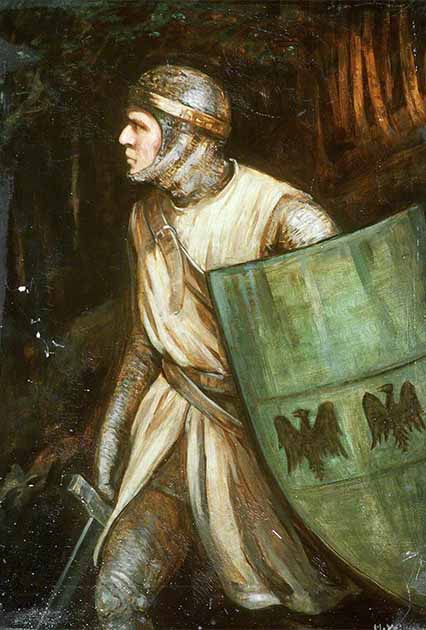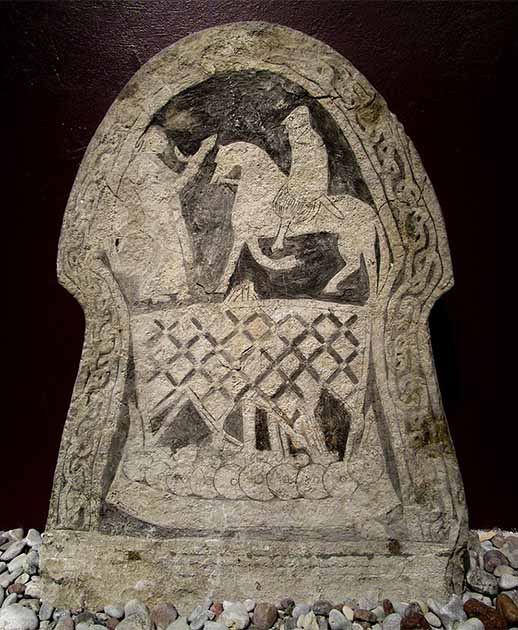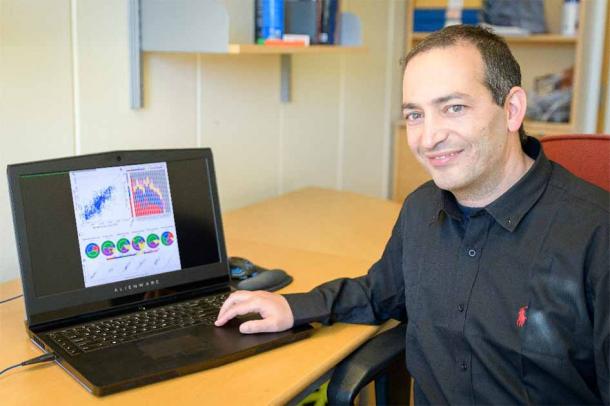Successfully Dating a Mummy Just Got Easier. New Testing Revealed
It is no secret that in dating, timing is everything. When studying the past, whether finding coins, bones, or pathogens buried in a mound – the question of when they are from makes the difference between a meaningful or a misleading discovery. Dating is so crucial that Willard Libby of the University of Chicago won the Nobel Prize in Chemistry in 1960 for developing radiocarbon dating that allows dating organic remains.
The Shortcomings of Radiocarbon Dating
Radiocarbon dating is based on the observation that living beings exchange 14C (a Carbon isotope) with their biosphere while alive and cease to do so when dead. At that point, their 14C atoms decay into 14N with a half-life of ∼5,700 years, whereas their 12C concentration remains constant. Thereby, assuming that the initial ratio of carbon isotopes in the biosphere remained constant over time, measuring the 14C to 12C ratio allows inferring the tissue’s age, at least in theory.
- Ancient DNA Data Fills in Thousands of Years of Human Movement and Genetic Adaptation in Africa
- Fine-Tuning Radiocarbon Dating Will Rewrite History!
In practicality, 14C has many shortcomings due to the changes in the 14C/12C ratio over time, low organic material or radiocarbon levels that bias dating, and contamination with modern samples. The variation between labs alone can be up to 1,000 years. It is like dating King Saul to Jesus' time or dating the current Prince of Wales (Prince Charles) to the period of Owain Gwynedd – the first Prince of Wales.
In other words, if we ever have a time machine and travel to the past (which should be possible according to general relativity) to meet those ancient people, we may miss them by centuries due to their poor dating!

Radiocarbon dating can create enormous variations in dating estimates. Such as dating the current Prince of Wales to the period of Owain Gwynedd, the first Prince of Wales (seen here). (Public domain)
Alternative Dating Methods: Beyond Radiocarbon Dating
The alternative to radiocarbon dating is using archaeological artifacts found alongside the tissues, which works very well if we find a skeleton carrying a coin minted by Julius Caesar but far worse if we find one without any cultural identifiers, as is often the case. Non-human bones, for example, are nearly impossible to date archaeologically.
Since archaeological dating is very subjective, the misconceptions are great. The Darra-i-Kur cave in Afghanistan, for example, initially assumed to be from the Paleolithic (30,000 years before the present), was later radiocarbon dated to the Neolithic, some 25,000 years later.
Paleogenomics, the science of reconstructing and studying the DNA of ancient organisms, positioned itself as the authority on understanding not only the genetics but also the history of ancient people, from mummies to Paleo Indians. However, only about half of these people were radiocarbon dated. None of the Scandinavian Vikings that were sequenced could be radiocarbon dated, which makes it impossible to study their personal history.

Picture stone from Gotland, Sweden (8th to 9th centuries) showing a woman offering a drink to a Viking. (Public domain)
When it comes to dating, one of the most controversial sites is Brandýsek, in the Czech Republic, where multiple individuals were found. Based on both radiocarbon and archaeological context, the site was dated to the Bell Beaker period (4,800 to 3,800 years before present). However, one of the skeletons was radiocarbon dated to around 5,500 years before present.
Given the problems with radiocarbon dating and that only two out of a dozen other individuals were radiocarbon dated, it was difficult to decide whether this was a bias or a factual finding. Obviously this has implications for the historicity of the site.

Genomes consist of hundreds of thousands of markers. (Eisenhans / Adobe Stock)
Using DNA Mutations to Understand When Someone is From
If only looking at the ancient DNA of these people could tell us when they lived… Well, this is when my team comes in. We already know of DNA mutations that can tell WHERE someone was from, but is it possible that there are DNA mutations that can tell us WHEN someone is from?
To understand how, consider the LCT gene mutation, which allowed our ancestors to process lactose and increased rapidly since the Neolithic. Looking at two ancient genomes, without and with the mutation, we can date them before and after the Neolithic, respectively.
This may not seem very precise, but if we had thousands of such mutations, each with its range, we could be far more accurate, especially if we have an artificial intelligence algorithm working for us and matching the patterns of such mutations with those of well-dated genomes.
We developed the Temporal Population Structure (TPS) tool and used it to date 5,000 ancient and modern genomes, including nearly 500 families – the ultimate challenge of any dating algorithm. In dating families, it is not only critical to predict the correct age of ancient family members but also to place all family members at the same time, not hundreds of years apart. TPS dated relatives to within 17 years of each other more accurately than alternative dating methods.

Dr. Eran Elhaik, whose TPS results were highly correlated with the estimated dates. (University of Lund)
Testing Dating Methods at the Brandysek Site in the Czech Republic
Can TPS help us settle the question of the Brandysek site? First, we independently TPS-dated 12 individuals from this site. TPS results were consistent with the alternative dating methods and confirmed that the questionable individual was much older. Second, the Y haplogroup (specific mutation patterns on the Y chromosome, identified with letters and numbers) of this individual belongs to the I2 group, whereas all the other males at that site belong to the R1 haplogroup.
R1 members arrived after the Yamnaya, a late Copper Age to early Bronze Age culture, migrated from the Caucasus onto Central Europe . By contrast, members of the I2 haplogroup resided in Europe during the Paleolithic and Neolithic. These results confirm that this site has been a burial ground since the Neolithic! This also explains why the site consists of architectural features that are not usually associated with Bell Beaker burials, like the use of stone in graves, and are far more primal in origin.
- Decade of DNA Analysis Reveals Astonishing Truths About Our Past
- Five Surprising Things DNA has Revealed About our Ancestors
While TPS performed well, note that it is not a substitution for radiocarbon dating due to its need for training data to predict ages. In other words, TPS can be used for dating the remains of humans and farm animals, for which extensive ancient genomic data are available. It could even provide much needed information for precisely dating ancient Egyptian mummies. However, those who intend to travel to the past to meet an ancient elephant or a monkey – you are on your own!
The full report is: Behnamian, S, et Al. Aug 2022. Temporal Population Structure, A Genetic Dating Method for Ancient Eurasian Genomes From the Past 10,000 years. published by Cell Reports Methods, Available at: https://www.cell.com/cell-reports-methods/fulltext/S2667-2375(22)00147-3
Top image: Breakthrough research into alternative dating technology using the Temporal Population Structure (TPS) tool could provide more accurate dating of ancient remains. Source: BillionPhotos.com / Adobe Stock
By Dr. Eran Elhaik
References
Behnamian, S, et Al. Aug 2022. Temporal Population Structure, A Genetic Dating Method for Ancient Eurasian Genomes From the Past 10,000 years. Cell Reports Methods. Available at: https://www.cell.com/cell-reports-methods/fulltext/S2667-2375(22)00147-3



















Comments
If i remember my logic correctly.. to trust an authority based solely on said authority is a fallacy
infinitesimal waveparticles comprise what we call home the earth
manipulatable by thought ability supressed in humans since birth
To eliminate the doubt, the dating should involve multiple sources/sponsors, multiple (modern) techniques, multiple nations and facilities, double blind handling, and complete transparency in delivering the results. That would make it hard to deceive. We have to prevent science from becoming ‘the art’ of lying.
Nobody gets paid to tell the truth.